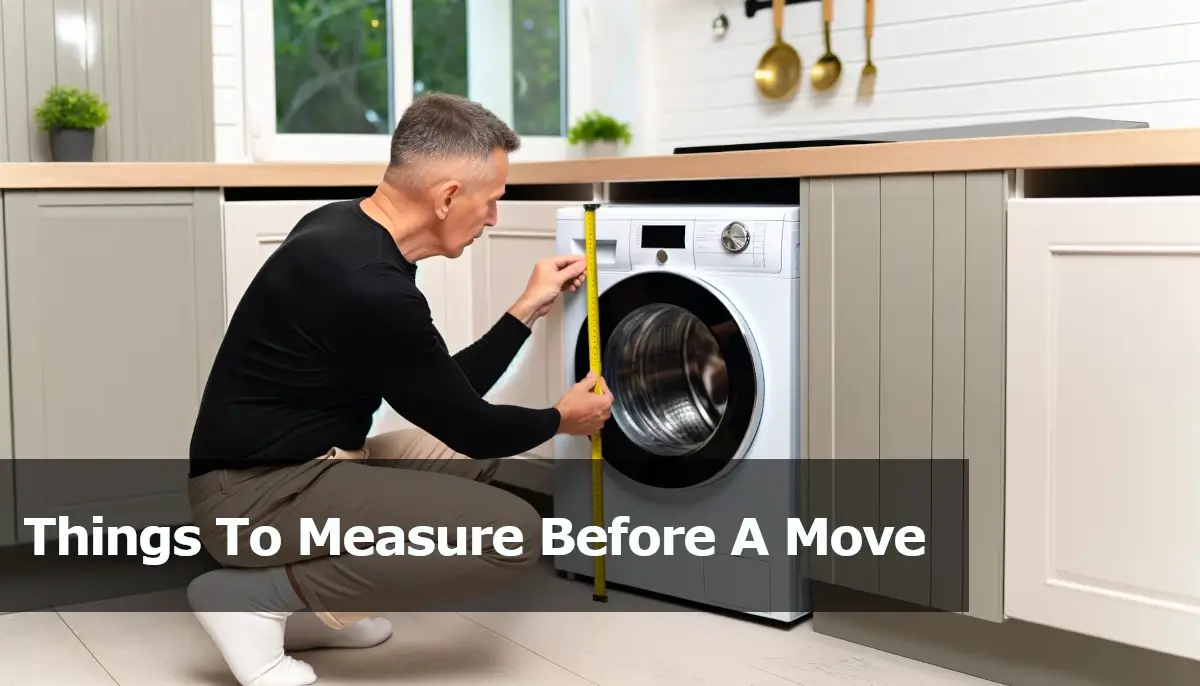Things to Measure Before a Move

Before you start packing for your upcoming move, there’s an essential aspect that you might not have considered yet. Ensuring that all your belongings fit seamlessly into your new space is crucial for a smooth transition.
From wardrobes to sofas, there are various measurements you need to take to avoid any last-minute surprises on moving day. By taking the time to measure these key areas, you can save yourself from potential headaches down the line.
Measure The Entrance To Let The Movers Know
When measuring the entrance, ensure the movers are informed of its dimensions for a smoother moving process. Providing the movers with accurate measurements of your entrance, including doorways, hallways, and staircases, is crucial to avoid any potential obstacles on moving day. Before the movers arrive, grab a measuring tape and determine the width, height, and depth of all entry points to your home. By doing this, you can prevent any surprises or delays during the moving process.
Communicate these measurements to the moving company in advance so they can plan accordingly. Let them know if any doorways need to be removed or if certain items may require disassembly to fit through the entrance. This proactive step will help the movers strategize on how to navigate tight spaces or tricky corners without causing any damage to your belongings or property.
Taking the time to measure the entrance and informing the movers of these details demonstrates your preparedness and can contribute to a more efficient and stress-free moving experience for everyone involved.
Measure The Windows
Before you move on to measuring the windows, remember the importance of providing accurate measurements of your entrance to ensure a smooth moving process. Now, turning your attention to the windows is crucial for several reasons.
First, measuring the windows will help you determine if your furniture will fit through them during the move. It’s essential to know the dimensions to avoid any last-minute surprises on moving day. Additionally, knowing the window sizes will assist you in deciding how to protect them during the moving process. You might need to consider special precautions or coverings to prevent any damage.
Furthermore, measuring the windows can also help you plan the layout of your new space. Understanding where the windows are located and their sizes will aid in arranging furniture and decorations efficiently. By taking the time to measure your windows accurately, you can ensure a smoother and more organized moving experience.
Measure The Staircase If Bulky Items Are Going Upstairs
Measuring the staircase for bulky items heading upstairs ensures a smooth and hassle-free moving process. Before moving day, grab a measuring tape and assess the width and height of your staircase. This step is crucial to avoid any last-minute surprises or difficulties when maneuvering large furniture pieces. Start by measuring the width of the staircase at its narrowest point, typically the turns or landings. Ensure that the width is wider than the widest part of your furniture to prevent getting stuck mid-move.
Next, measure the height of the staircase, especially the vertical clearance between steps. Compare this measurement to the height of your bulky items, such as couches or wardrobes, to confirm they can be comfortably carried up without any obstructions. If the height is insufficient, you may need to consider disassembling the items or finding an alternative way to transport them.
Taking the time to measure the staircase beforehand can save you from potential headaches and damages on moving day.
Check also: What to do before the movers come?
Measure The Lift If Moving To A Flat
To ensure a smooth transition when moving to a flat, remember to measure the lift’s dimensions beforehand. The lift is a crucial element when relocating to a flat, especially when dealing with larger furniture or numerous boxes. By measuring the lift’s dimensions, you can determine if your belongings will fit and avoid any last-minute surprises on moving day.
Start by measuring the width and height of the lift’s door to ensure that your largest items can pass through without any issues. Additionally, consider the interior dimensions of the lift itself to guarantee that there’s enough space for your furniture and boxes to comfortably fit inside.
Remember to account for any obstructions or protrusions within the lift that may affect the moving process. By measuring the lift beforehand, you can plan accordingly and make the moving process much more manageable and efficient.
Check also: Transporting Plants Tips When Moving House
Measure The Bedrooms To See If All Beds Can Fit
To ensure all beds can fit in the bedrooms, measure the available space accurately. Start by measuring the dimensions of each bedroom, including the length, width, and any alcoves or nooks that may impact bed placement. Take into account the size of the beds you plan to move, whether it’s a twin, full, queen, or king size. Remember to measure not only the floor space but also the height of the room to ensure there’s enough clearance for bunk beds or loft beds.
Consider the layout of the room and any additional furniture that may already be present, such as dressers, nightstands, or desks. Visualize how the beds will fit in the room while leaving enough space for movement and other activities. If the bedrooms are small, consider using space-saving furniture or opting for smaller bed sizes to maximize the available space.
Check also: What size van do I need for my stuff?
Measure The Wardrobes If They Will Fit
Before the move, make sure to measure your wardrobes to ensure they’ll fit in the new space. Start by taking the measurements of each wardrobe, considering both height and width. This step is crucial in preventing any surprises on moving day, saving you time and potential frustration. By knowing the dimensions of your wardrobes, you can plan ahead and make necessary arrangements if adjustments are needed.
If you discover that your wardrobes are too large for the new space, you may need to disassemble them before the move. This process can be time-consuming but will ultimately make the transition smoother. Alternatively, if the wardrobes are too small for the new area, you can use this opportunity to declutter and downsize your belongings.
Measure The Space For Your Appliances
After ensuring your wardrobes will fit in the new space, proceed to measure the area for your appliances such as the washing machine, fridge, and dryer. It’s crucial to ensure these essential appliances have enough space in your new home. Start by measuring the width, height, and depth of the allocated spaces for each appliance. Consider any additional clearance needed for ventilation and maintenance.
For the washing machine, measure the space to accommodate both the machine itself and the door for loading and unloading. Check if there are any water connections and power outlets nearby for easy installation.
When measuring for the fridge, take into account the door swing direction and any surrounding cabinets that may affect its opening.
Lastly, for the dryer, ensure there’s enough room for proper air circulation to prevent overheating. Measure the space needed for the venting system as well.
Check also: Should I Get Packing Service?
Measure The Sofa To See if it will fit in the living room
Make sure you measure the sofa to determine if it fits in your living room. Before the move, take the time to measure the width, height, and depth of your sofa. Start by measuring the doorway, hallways, and any tight corners the sofa needs to pass through. Compare these measurements to the dimensions of your sofa to ensure a smooth entry into your living room. Remember to account for any additional space needed for maneuvering the sofa into place.
If your sofa is too large for the available space, consider alternatives such as removing the legs for temporary transport, hiring professional movers experienced in navigating tight spaces, or opting for a smaller sofa that fits comfortably in your living room. Planning ahead and measuring accurately can prevent the frustration of discovering your sofa doesn’t fit after the move. By taking this simple step, you can ensure that your sofa seamlessly transitions into its new home without any hiccups.
If you believe this can help someone else, please share it. Thank you.
